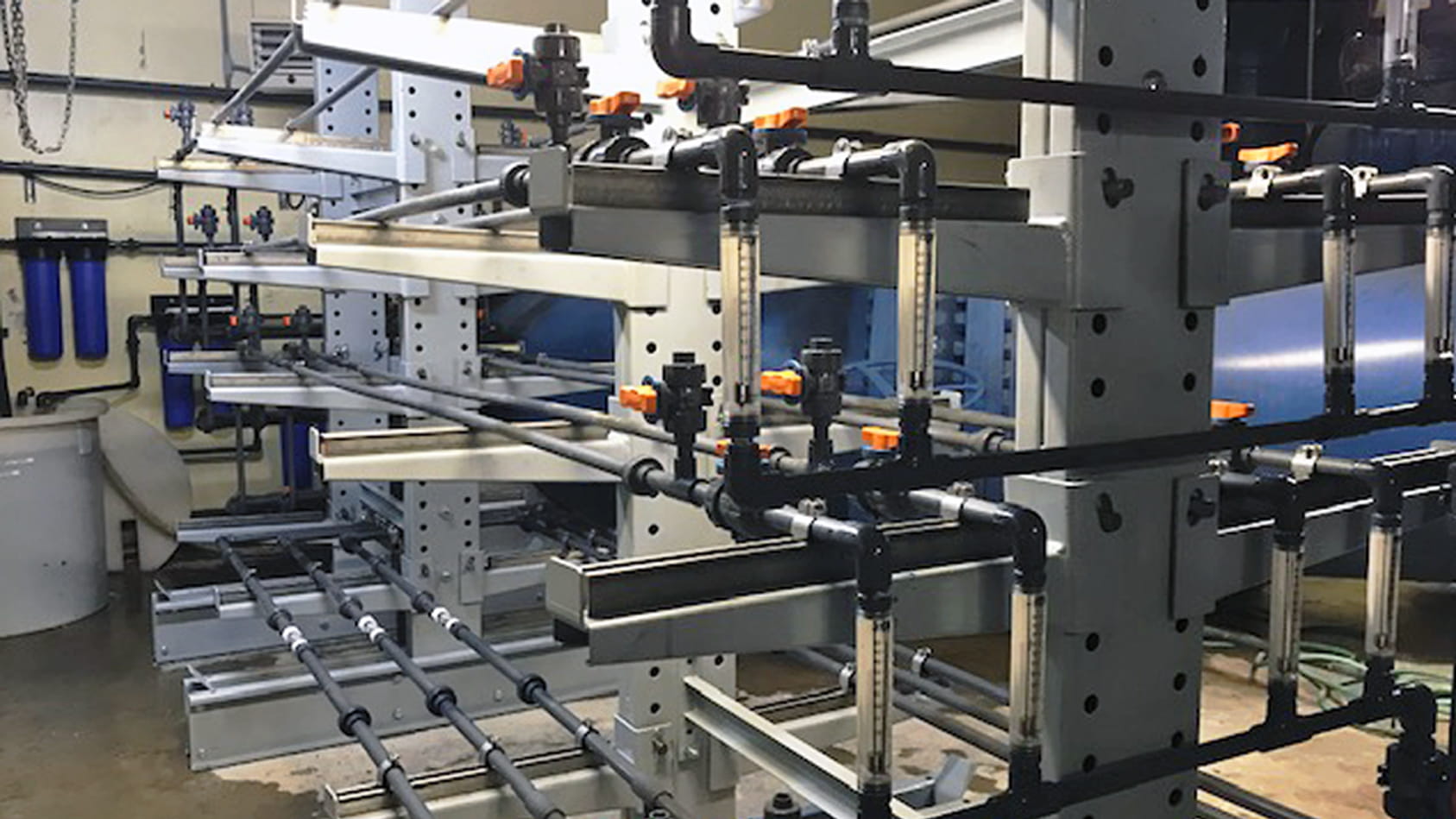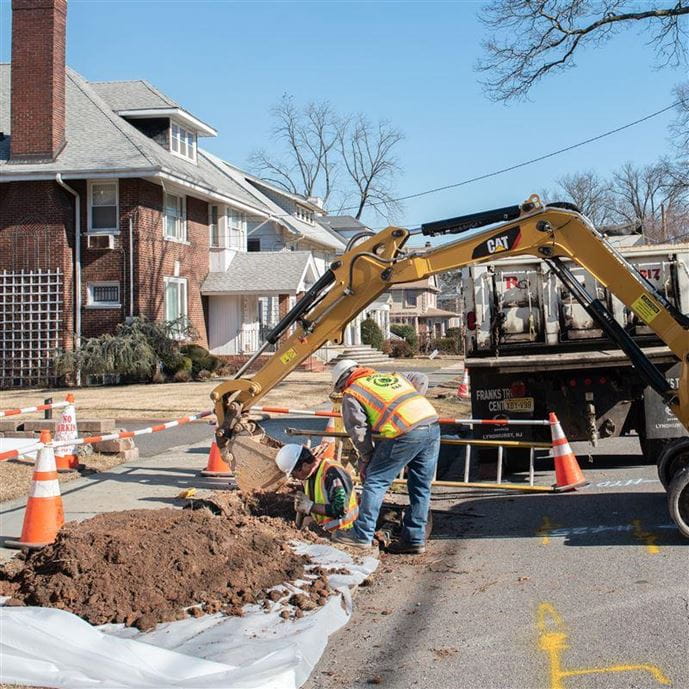Corrosion Control Studies
Who is Required to Complete a Corrosion Control Treatment (CCT) Study?
Review the chart below to confirm if your water system is required to complete a CCT optimization or re-optimization study.
| System Size | Small ≤10,000 |
Medium >10,000 and ≤50,000 |
Large >50,000 |
|
| Concentration Pb / Cu | CCT Existing? | |||
| Exceed lead action level (>15 μg/L) OR Exceed copper action level (<1.3 mg/L) |
With Existing CCT | Yes. Small system flexibility alternatives applies. | Yes | Yes |
| Without Existing CCT | Yes. Small system flexibility alternatives apply. | Yes | Yes | |
| Exceed lead trigger level (>10 μg/L) but not lead action level (≤15 μg/L) AND Below copper action level (≤1.3 mg/L) |
With Existing CCT | Evaluate and recommend a small system flexibility alternative for implementation if future action level exceedance. | Yes | Yes |
| Without Existing CCT | Evaluate and recommend a small system flexibility alternative for implementation if future action level exceedance. | Evaluate and recommend optimal CCT (Step 1) for implementation if future action level exceedance. A full CCT study may be required by State. | Yes | |
| Above 5 μg/L, but below lead trigger level (≤10 μg/L) AND Below copper action level (≤1.3 mg/L) | With Existing CCT | No, unless required by State | No, unless required by State | State may require study |
| Without Existing CCT | No, unless required by State | No, unless required by State | Yes | |
| Below 5 μg/L for lead AND below copper action level (≤1.3 mg/L) | With Existing CCT | No, unless required by State | No, unless required by State | No, unless required by State |
| Without Existing CCT | No, unless required by State | No, unless required by State | No, unless required by State | |
If your system did not exceed the lead action level but did exceed the trigger level of 10 µg/L, your state may require your system to perform a re-optimization CCT study. Implementation of the results of the study is not required under the LCRR unless you exceed the lead action level in a future monitoring period.
If your system has recently conducted a CCT study, you may not need to conduct another study if nothing changed in your system. Consult with your state if you need to conduct a new or modified study.
Federal Schedule
Some states have tighter schedules than the federal Lead and Copper Rule—confirm your state's CCT regulations before beginning your program.
Treatment Studies
Follow the below steps for conducting a CCT study. Confirm the schedule with your state as some states have more aggressive schedules:
Step 1
Within 6 months of the monitoring period with an exceedance triggering a CCT study, a system must recommend optimal or re-optimized corrosion control treatment per 141.82.
A system with lead service lines exceeding the lead action level must harvest lead pipes from the distribution system, construct flow-through pipe loops, and start operating the loops with finished water within one year of the sampling period with the exceedance.
States may approve modifications to existing CCT without a study for systems exceeding the trigger level, but not the lead or copper action levels. In this case, the state shall specify re-optimized CCT within 6 months of receiving the treatment recommendation and the system will have 6 months to install the modifications.
Step 2
Skip if a large system or if performing pipe loops under Step 1.
Within 12 months (or 18 months for small systems) of the monitoring period with the exceedance, if not required otherwise, the state may require the utility to perform a CCT study per 141.82(b). If the state does not require a study, the state must specify optimal corrosion control treatment in writing.
Step 3
A CCT study needs to be completed within 30 months of the end of the tap sampling period with a lead action level exceedance. This applies to all large water systems and medium or small water systems with lead service lines. If a state requires water systems to perform a CCT under Step 2, the water system must complete the study within 18 months after the state notifies the system in writing that the study is required.
Conducting a CCT Study
The revised LCR provides specific guidance for what they consider to be included in a CCT study. A CCT study may include one or several of the following components:
- Water quality analysis
- Documented analogous treatment systems of similar size, water chemistry and distribution system configuration
- Coupon testing. Note these tests can only be used to reduce the number of alternatives to test in pipe loops and not as a stand alone study - I.e. screening of alternatives.
- Pipe loops with harvested lead pipes (required for medium and large systems with lead service lines that exceed the lead action level)
- Partial-system tests
Acceptable Treatment Alternatives
The LCRR is very specific that an alternative cannot be eliminated on the basis that it may cause other water quality issues, simultaneous compliance concerns or downstream impacts (I.e. impact on wastewater or receiving water bodies). The following are acceptable alternatives for a CCT study and considered approved CCT methods:
- Alkalinity and pH adjustment
- Addition of orthophosphate as corrosion inhibitor (a concentration sufficient to maintain an effective residual, 1 mg/L residual and 3 mg/L as PO4)
- Addition of a silicate-based corrosion inhibitor at a concentration sufficient to maintain an effective residual
- Other treatments may be approved on a case-by-case basis by your state.
The LCRR is clear that the following treatments will no longer be considered approved CCT methods. This means that if you use one of these currently, when the LCRR is in effect, your system will no longer be considered to have CCT:
- Calcium carbonate stabilization is no longer an acceptable alternative as it does not form a film on the lead pipes.
- Polyphosphates without orthophosphate are no longer considered an acceptable CCT method.
Corrosion Control Implementation
Follow the below steps if you are required to implement CCT based on the results of your study
Step 4
After CCT study is complete, the state will review within 6 months of the completion of the study performed under Step 3 and designate optimized/re-optimized CCT if in agreement.
Step 5
If approved, the state will require CCT implementation within 24 months. Systems modifying existing CCT will have 12 months to install modifications for re-optimized CCT.
Step 6
System to complete follow-up sampling within 12 months of implementation (Step 5).
Step 7
The state will review a system’s installation of treatment and designate optimal water quality parameters (OWQPs) within 6 months of completion of follow-up sampling (Step 6) if water quality parameter monitoring is consistent and the system’s lead levels are below the trigger level.
Step 8
System must operate in compliance with state-designated optimal WQPs and continue to conduct tap sampling. Systems are deemed out of compliance if they have an excursion for any of the state-specified WQPs for more than nine (9) cumulative days during a 6-month period. An excursion occurs whenever the daily value for one or more of the WQPs measured at a sampling location is below the minimum value or outside of a designated range.







